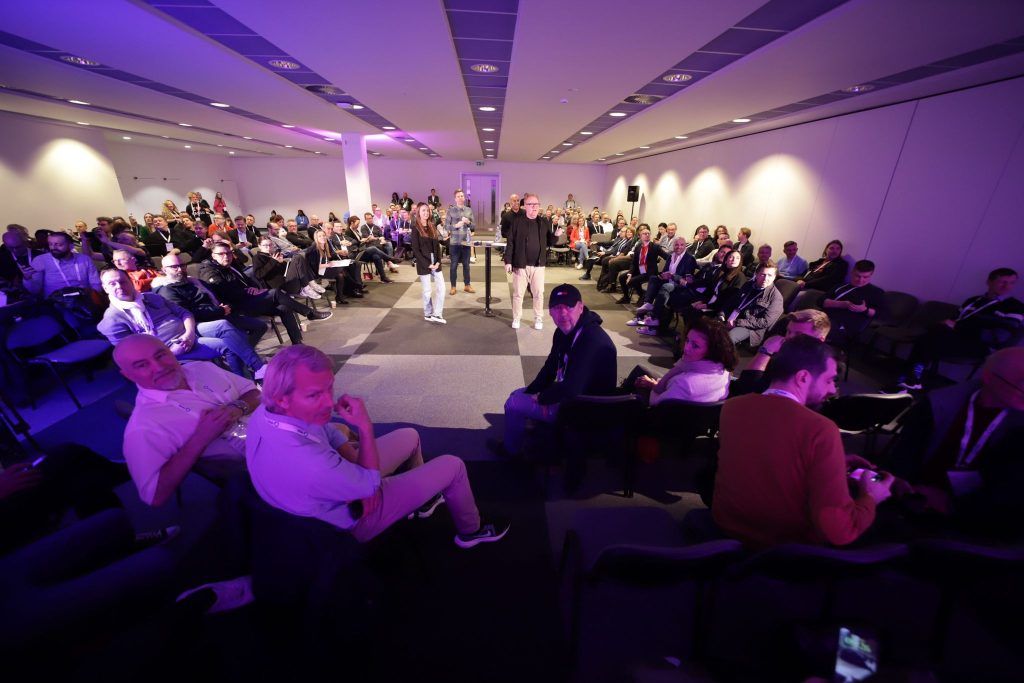One of the first of Tuesday’s sessions consisted of a discussion between Head of Music for BBC Radio 1 and 1Xtra Chris Price, producer and presenter of the Greatest Hits Radio Des Paul, head of the production company ‘Bounce’ Nik Goodman and Head of Music at Radio X Lea Stonhill.
Firstly, the auditorium applauded the party hosted by Czech Radio the night before in La Fabrika, which got a really enthusiastic reaction from the attendees.
The presenters began the speech claiming how important the start strategy is, especially when it comes to getting to know your audience and setting your goals. Des Paul himself says he does a revision every half a year, which was the same for some of the other music programmers.
They also agreed that every publisher running any sub station should have some niche station for filling a need and should keep the main station subtle, so it doesn’t move all listeners to the spin-off brand.
Lea says the most important is naturally the research which is a big part when creating a playlist, however Chris claims that at BBC Radio 1 research is not necessary anymore since there are Shazam and Spotify data available – but the listener still needs to have a connection with the song. The main questions then are for example: How many times has the radio already played this song and do listeners have a relationship with it?
One of the struggles Chris mentioned was repetition of the songs. For the host of the programme it means to introduce a song you had already introduced dozens of times in a new, fresh way. One of the music directors in the room then added that he “hates the songs their station plays, but does not care about them”, with another attendant disgracing what they say about the song.
Perfect hour of music is different for every station, but in Lea’s Radio X, their hour starts with a popular song that every listener of the station knows. Then they proceed with song from each decade, interlaying them with some of the newer songs. The one advice from Lea is to cover an unknown song with two of the popular ones on both sides in the program, so the unfamiliar ones do not fall through. But you also can not have too many of them.
Chris also points out the importance of a playlist’s diversity. Does it have female artists, unknown and independent ones? Is it different from the all around Top 40 chart? Chris is also grateful, when an artist debuts a new song on their station first, because it draws attention.
There are probably no universal arrangements to build up a radio station. all the speakers together concluded it by saying that various methods work differently for each station and every presenter has to find his own way. You need to know what your audience likes, but you also should break your pattern in some way.



